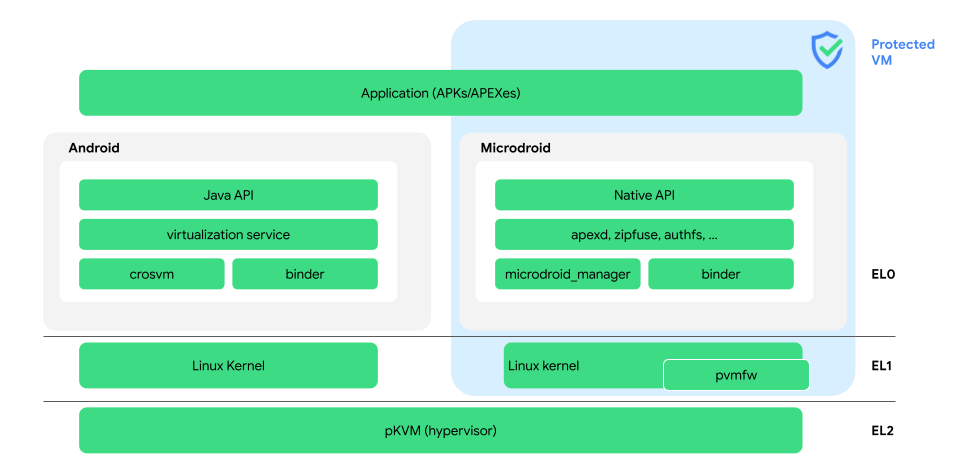

Generally, we (sadly) see smart monitors come up like smart TVs did ten years ago.
Some noteable features include streaming apps (netflix…) and wireless screen mirroring from phones.


Generally, we (sadly) see smart monitors come up like smart TVs did ten years ago.
Some noteable features include streaming apps (netflix…) and wireless screen mirroring from phones.


This graphic shows that the platform is designed with full virtualization in mind. You can see that the VM on the right has its own kernel (unlike for example docker containers).



I don’t think so. I think they are trying to make android more suitable for “desktop” usage, similar to chrome os.
By providing a gui for larger screens (Android 15) and virtualization (Android 16) they are significantly expanding what android can do.
As for me, I just visit this site to see the next sales. But it’s a neat idea


Sounds a bit like the linux container in chromebooks. Looks like Google is planning to merge chrome os and android in future


I think counting fediverse users is about as difficult as counting e-mail adresses.


If you vote, post or comment, you count as active user.
They should have split it so both of them can enjoy at least 50% of it.
I agree, but I understood this question in the context of a homelab.
And for me, a homelab is not the right place for a public website, for the reasons I mentioned.


No, with these reasons:
I have a VPS for these tasks, and I host a few sites for friends amd family.

Grains are “better” than I would have expected.


All models are equipped with 16GB of RAM, and two additional storage variants are available that cost 21,999 yuan (about $3,089) for 512GB and 23,999 yuan (about $3,370) for 1TB.
They are learning from Apple about the memory price. $300 for 512 gb additional memory storage is insane.


A little low specs for a tablet with “pro” in its name, but at only €400 they needed to save money somewhere


You’re right, my comment was oversimplified.


Because both ways are used. Microsoft relies on file names, linux on the first bytes of the file.


I don’t think “most” applies here. Text-based files, pdf, media files and most executeable files are not .zip.


I think it makes sense from a programming view. When you have a document, you can add all the media files and pack them together as one archive. Then the program sets the filename to .docx so everyone knows that they need an office program to open that file.
For the users, all you need to know is what program can open which files. If every document would be named .zip, you would have no idea if it was a spreadsheet or slides for your presentation.


OP refers to the fact that you can rename some filetypes to .zip and unpack them.
Notable examples microsoft office files (.docx) or android apps (.apk).
Counterexample are media files (mp3, mp4, jpg).
It’s quite obvious from the context
Maybe because many streaming services have locked their 4k content behind some specific apps and platforms and offer lower resolutions on general desktop PCs.